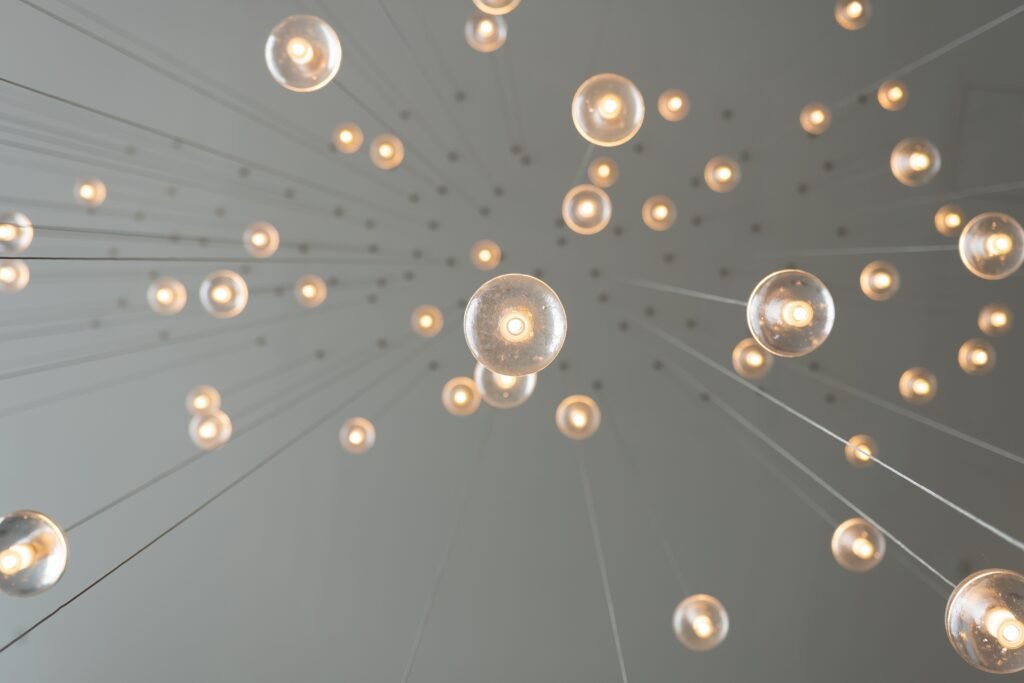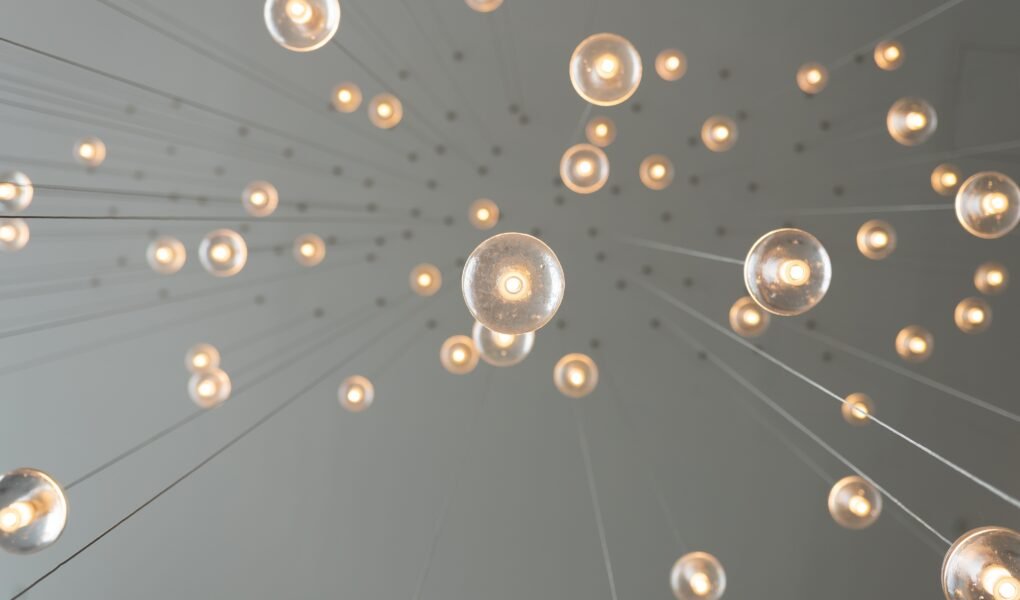If you’re looking to take control of your home’s lighting system and bring it into the 21st century, look no further! In this article, you’ll discover a collection of expert tips that will help you master your smart lighting system like a pro. From setting up your smart bulbs to creating customized schedules and optimizing energy efficiency, these tips will empower you to transform your living space into a perfectly illuminated haven. So get ready to shed some light on the possibilities and unlock the full potential of your smart lighting system!

This image is property of images.unsplash.com.
Choosing the Right Smart Bulbs
When it comes to setting up a smart lighting system, choosing the right smart bulbs is crucial. There are different types of smart bulbs available in the market, each with its own set of features and capabilities. LED smart bulbs, for example, are energy-efficient and have a longer lifespan compared to traditional incandescent bulbs. On the other hand, smart bulbs with color-changing capabilities can add a touch of personalization to your lighting setup.
Before making a purchase, consider the compatibility of the smart bulbs with your existing smart home system. Some smart bulbs are designed to work with specific smart home hubs or bridges, so it’s important to ensure that your bulbs will seamlessly integrate with your chosen system.
Another factor to consider is the lumens (brightness) and color temperature of the smart bulbs. Lumens determine how bright the bulbs will be, so choose accordingly based on the desired level of brightness for each room or area. Color temperature refers to the warmth or coolness of the light produced by the bulbs, ranging from warm white to cool white. Consider the mood and ambiance you want to create in each space when selecting the color temperature of your smart bulbs.
Lastly, check for any extra features and smart integrations that the smart bulbs may offer. Some bulbs come with additional features like dimming capabilities, motion sensors, or compatibility with voice assistants such as Amazon Alexa or Google Assistant. These features can enhance the functionality and convenience of your smart lighting system.
Setting Up Your Smart Lighting System
Once you have chosen the right smart bulbs for your needs, it’s time to set up your smart lighting system. Here are some important steps to follow:
Ensure a stable and reliable Wi-Fi connection in your home. A stable connection is essential for the smooth operation of your smart bulbs and the mobile app that controls them.
Properly install the smart bulbs in the desired light fixtures. Follow the manufacturer’s instructions to ensure they are securely fitted.
Connect the smart bulbs to your smart home hub or bridge. This step may vary depending on the type of smart bulbs and smart home system you have. Refer to the manufacturer’s instructions for specific guidance.
Download and set up the compatible mobile app for your smart bulbs. The app will allow you to control and customize your lighting system, so make sure to follow the instructions to connect the app to your bulbs and smart home system.
Create zones and group bulbs for easy control. Organize your smart bulbs into different zones or groups based on their locations or intended purposes. This will make it easier to control them individually or collectively through the mobile app.
Designing a Smart Lighting Schedule
One of the advantages of a smart lighting system is the ability to create customized lighting scenes for different activities or moods. Here are some tips to help you design a smart lighting schedule that suits your needs:
Understand the importance of lighting scenes. Lighting scenes are pre-set configurations of brightness and color temperature that can be easily activated to create a specific ambiance or cater to a particular activity. For example, you can have a “Movie Night” scene with dimmed lights and a warm color temperature for a cozy cinematic experience.
Experiment with different colors and brightness levels. Smart bulbs with color-changing capabilities allow you to choose from a wide range of colors. Try out different colors and brightness levels to find the ones that create the desired atmosphere for each room or occasion.
Create different lighting scenes for various activities. Whether it’s a “Reading” scene with bright, cool lighting or a “Dinner Party” scene with soft, warm lighting, tailor your lighting scenes to match the activities taking place in each space.
Automate your lighting schedule with timers and sensors. Take advantage of the scheduling features in the mobile app to automate your lighting system. Set timers to turn on/off specific lighting scenes at predetermined times or use motion sensors to activate lights when someone enters a room.
Exploring Advanced Smart Lighting Features
Once you have mastered the basics of your smart lighting system, it’s time to explore some advanced features that can take your lighting experience to the next level. Here are a few ideas:
Utilize voice control for hands-free operation. If your smart lighting system is compatible with voice assistants like Amazon Alexa or Google Assistant, you can control your lights simply by using voice commands. This feature is especially convenient when your hands are full or you’re unable to access the mobile app.
Sync smart lighting with music and entertainment. Some smart lighting systems offer the ability to sync your lights with your music or entertainment system. This can create a dynamic lighting experience that complements the mood or beats of your favorite songs or movies.
Integrate smart lighting with other smart devices. Expand the capabilities of your smart lighting system by integrating it with other smart devices in your home. For example, you can set up your lights to automatically turn on when your security system detects motion or to switch off when you leave the house.
Enable geofencing to control lights when away. Geofencing allows you to define a virtual boundary around your home using your smartphone’s GPS. By enabling geofencing in the mobile app, you can program your lights to automatically turn on or off when you enter or leave the defined boundary. This feature adds an extra layer of convenience and security to your smart lighting system.

This image is property of images.unsplash.com.
Troubleshooting Common Smart Lighting Issues
Sometimes, even the most advanced technology can encounter issues. Here are some common smart lighting issues and how to troubleshoot them:
Check for firmware updates and software patches. Manufacturers regularly release firmware updates and software patches to improve the performance and compatibility of their smart lighting systems. Make sure to check for updates periodically and follow the instructions to install them if necessary.
Ensure proper power supply and connection. If your smart bulbs are not turning on or responding, check that they are receiving power and properly connected. Ensure that the light fixtures are functioning correctly and that the bulbs are securely screwed in.
Reset and re-pair smart bulbs if needed. If a smart bulb is not functioning as expected, try resetting it to its factory settings and then re-pairing it with your smart home system. This can often resolve connectivity issues or other operational glitches.
Adjust router settings for better connectivity. If you are experiencing connectivity issues with your smart bulbs, check your router settings. Sometimes, adjusting the Wi-Fi channel, enabling guest networks, or optimizing the router’s location can improve the connection stability and range.
Enhancing Home Security with Smart Lighting
Smart lighting can play a significant role in enhancing the security of your home. Here are some tips on how to utilize your smart lighting system for added security:
Set up motion-activated lights for outdoor areas. Installing motion-activated lights in your outdoor spaces, such as the front porch or backyard, can deter potential intruders. The lights will automatically turn on when motion is detected, alerting you and deterring any unwanted activity.
Simulate occupancy with smart lighting. When you are away from home, use your smart lighting system to simulate occupancy and make it appear as if someone is home. Program your lights to turn on and off at specific times or use randomized schedules to create the illusion of an occupied house.
Integrate smart lighting with security systems. If you have a home security system, consider integrating your smart lighting system with it. This way, your lights can automatically respond to security alerts, such as flashing red when an intrusion is detected or activating emergency lighting in the event of a fire alarm.
Utilize away mode to deter potential intruders. Many smart lighting systems offer an “Away Mode” feature that randomly turns lights on and off throughout the day, replicating the patterns of an occupied home. This feature can give the impression that someone is present, discouraging burglars from targeting your property.

This image is property of images.unsplash.com.
Energy Saving Tips for Smart Lighting
While smart lighting provides convenience and customization options, it’s important to also consider energy efficiency. Here are some tips to make your smart lighting system more energy-efficient:
Use energy-efficient LED bulbs. LED bulbs use significantly less energy than traditional incandescent bulbs and have a longer lifespan. Opt for LED smart bulbs to reduce energy consumption and save money on your electricity bills.
Dim lights and reduce brightness. There may be times when you don’t need the full brightness of your smart bulbs. Dimming the lights or reducing their brightness level can save energy without compromising on the desired ambiance or functionality.
Take advantage of daylight harvesting. Some smart lighting systems have daylight harvesting capabilities, which automatically adjust the brightness of the lights based on the natural light available in the room. This ensures that lights are only at their full brightness when necessary, saving energy throughout the day.
Utilize occupancy sensors in unused spaces. If there are areas in your home that are frequently left unoccupied, such as hallways or utility rooms, consider installing occupancy sensors. These sensors will automatically turn off the lights when no motion is detected, preventing unnecessary energy consumption.
Customizing Smart Lighting with Third-Party Apps
To further enhance your smart lighting experience, consider exploring third-party apps that offer advanced lighting effects and customization options. Here are a few ways you can customize your smart lighting system:
Explore third-party apps for advanced lighting effects. Some third-party apps provide additional lighting effects that go beyond what the manufacturer’s app offers. These effects can create stunning visual displays, including color transitions, animations, and more.
Sync with smart assistants for expanded functionality. If you have a smart assistant like Amazon Alexa or Google Assistant, explore the available integrations that allow you to control your smart lighting system using voice commands. This can provide additional convenience and flexibility in managing your lights.
Discover automated lighting recipes. Many smart lighting systems support the creation of automated lighting recipes or routines. These routines allow you to set up specific sequences of lighting changes that can be activated with a single command or at a scheduled time. Use these recipes to automate your lighting system for different activities or occasions.
Updating and Expanding Your Smart Lighting System
As technology advances, it’s important to keep your smart lighting system up to date. Here are some tips for updating and expanding your system:
Keep up with smart home system upgrades. Manufacturers often release updates or new versions of their smart home systems. Stay informed about these upgrades and consider updating your system to benefit from the latest features and improvements.
Add new smart bulbs and accessories as needed. As your needs and preferences change, you may want to expand your smart lighting system with additional smart bulbs or accessories. Consider the compatibility with your existing system and choose products that seamlessly integrate.
Consider compatibility with other smart home devices. If you have other smart home devices, such as smart thermostats or security cameras, ensure that your smart lighting system is compatible with them. This will allow you to create a fully integrated smart home ecosystem that can be controlled from a single platform.
Getting the Most Out of Your Smart Lighting System
To make the most of your smart lighting system, keep the following tips in mind:
Experiment and customize lighting to fit your lifestyle. Smart lighting systems offer a wide range of customization options. Take the time to experiment with different lighting scenes, colors, and brightness levels to find the perfect setting for each space and activity.
Stay up to date with new features and firmware updates. Manufacturers often release firmware updates and add new features to their smart lighting systems. Stay informed about these updates and make sure to install them to benefit from the latest enhancements and improvements.
Share control with family members or roommates. If you live with other people, consider sharing control of the smart lighting system with them. This way, everyone can have access to the mobile app or voice commands, allowing for seamless control and convenience.
Consider professional installation for complex setups. If you have a larger or more complex smart lighting system, or if you are not comfortable with DIY installations, consider hiring a professional to ensure a smooth and proper setup. They can help optimize the placement of the bulbs and provide guidance on maximizing the capabilities of your smart lighting system.
By following these tips and recommendations, you can master your smart lighting system and create a personalized and efficient lighting experience in your home. Enjoy the convenience, comfort, and energy savings that come with smart lighting technology!



